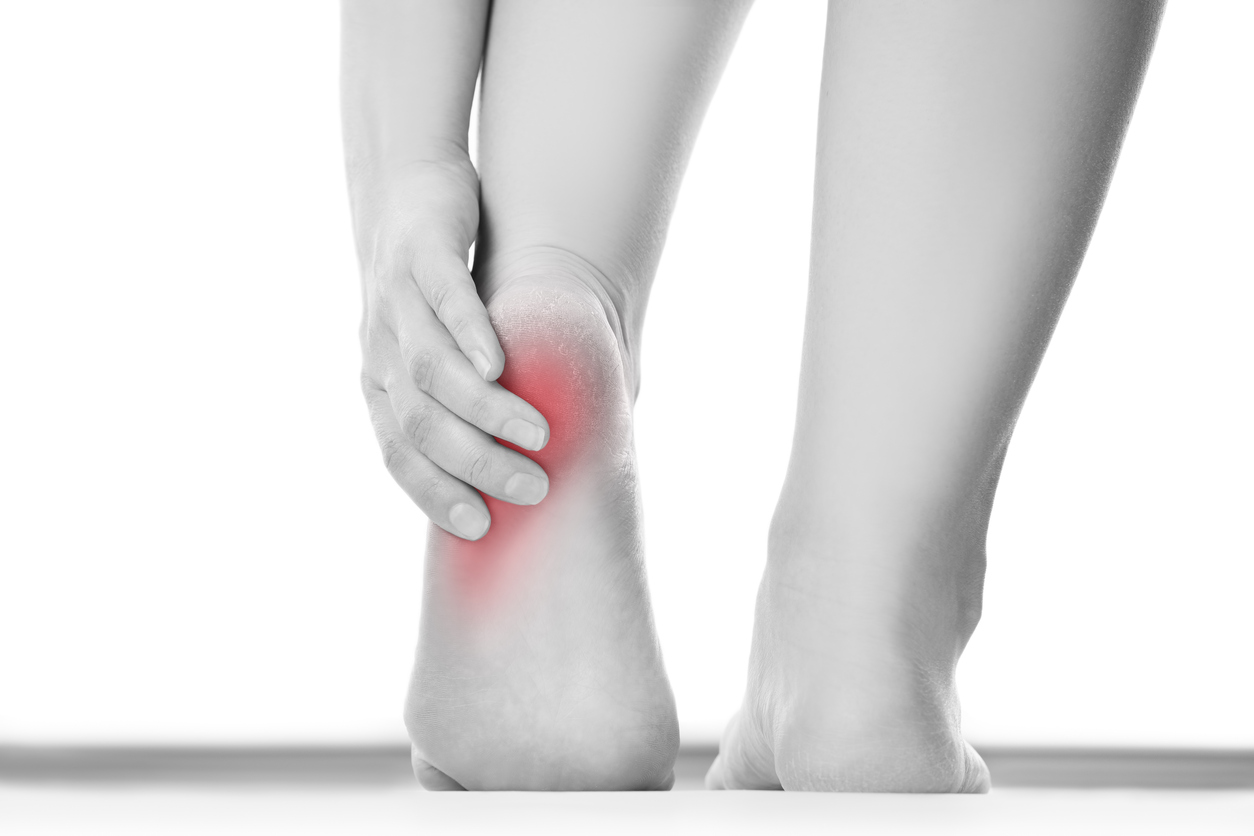Heel Pain
HEEL PAIN....... is one of the most common foot complaints Ian sees at PodiaClinic.
 The good news is some types of heel pain can get better on their own over time so, if it is just a niggle or you have had it for only a short while, then a tincture of time and patience might be all the help needed.
The good news is some types of heel pain can get better on their own over time so, if it is just a niggle or you have had it for only a short while, then a tincture of time and patience might be all the help needed.
If it is painful and affecting your activity, then assessment is always worthwhile and treatment options can be explained. The following are some tips on types of heel of heel pain people get and may include yours.
Plantar Fasciitis / Fasciopathy
Pain usually occurs when your foot is flat to the floor. You feel it getting up from a period of being seated or in bed. This is because weight bearing places a stretch on the plantar fascia and muscles. In the early stages it lasts a few steps then wears off until you have rested and get up again. A sign it is getting worse is pain lasting longer and not going off when you sit down.
Why the two names? It was once thought the pain was caused by inflammation (itis) alone but research has now shown any inflammation has a small part to play. The "opathy" suggests changes in the quality of the fascia, that are more long term in coming, affect how well the fascia works. In practice, when people attend with long term heel pain like this it can be a mix of both.
Fat Pad Pain
Pain usually occurs in the fatty pad on the bottom of your heel, because it is inflammed. It can be sore when the heel touches the ground and throb when not in ground contact. The fat pad can be tender if it is squeezed or poked.
Bone bruising
Pain usually occurs when your heel strikes the ground. It is repetative injury arising from the heel impacting on the ground and a bruising to the heel bone developing. Squeezing the bone is often painful. Although it can occur with general walking it is often more related to sporting activity or a sudden increase in weight bearing activities.
Bursitis Pain
Pain is usually felt at the very back of the heel bone, where the achilles inserts. It is sometimes called retrocalcaneal bursitis. Just above the heel bone and behind the achilles sits a natural bursa (sac of fluid). This may become inflammed if repeatedly stressed, leading to discomfort or pain, usually felt as you lift your heel of the ground. It is often quite tender on pressing and the inflammation can travel up the leg and around the heel bone.
Nerve irritation
A number of nerves pass through the foot and a particular set of nerves can become irritated in the heel area. Indications a nerve is irritated include burning and/or tingling, occassionally there can be numbness.
How did I get heel pain?
Besides an actual injury on the heel itself there can be mechanical reasons, the way you walk or run, that might contribute to it occurring. These mechanical causes can lie within the foot or be higher up such as in the gluteal muscle areas (the buttocks). Foot pain may therefore be a sign of someting else needing help higher up the body.
How can we get it better?
Ian has many years experience in treating plantar heel pain, helping people gain excellent improvement . He will assess the way you walk and stand, check the quality and range of movement of the joints of your feet and ankles, assess the quality and range of movement in various tissue (muscles, ligament, fascia, tendons) and work with you in gaining improvement.
